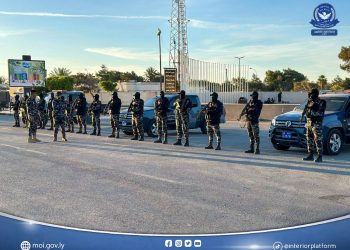By Tom Westcott.

Tripoli, 15 September:
New research has led to Libya being stripped of its 90-year record as the hottest place on . . .[restrict]earth, according to the World Meteorological Organisation (WMO).
Libya has held the record since 1922 when, on 13 September, the temperature at an Italian fort in El Azizia was recorded to be 58 degrees celsius (136.4 degrees fahrenheit). For the last 90 years, the country has remained two degrees fahrenheit hotter than any other place on earth, until a query from weather historian Christopher C. Burt, prompted an investigation.
Suspicious about the high temperature, Burt did some research, which included contacting Khalid Ibrahim El Fadli, director of the climate department at the Libyan National Meteorological Center (LNMC) in Tripoli. On his ‘weather historian’ blog on wunderground.com, Burt writes: “El Fadli’s enthusiastic and gracious response (to provide all and any weather data I might be interested in) was beyond my expectations.”
Randall Cerveny, the WMO’s Rapporteur of Weather and Climate Extremes, has said that following Burt’s research and query, a committee of meteorological experts was formed to analyse the data and historical records. The investigation then began on 8 February 2011.
Burt wrote that: “Amazingly, El Fadli had just uncovered a key document: the actual log sheet of the observations made at Azizia in September 1922.” It was in this document that an intriguing anomaly was discovered. Two days before the reading of 58 degrees celsius, a new person had taken over the job of observing temperatures. And this unknown figure had made a key error in his record-keeping, incorrectly recording the data.
Cerveny said: “When we looked at the original 1922 log-sheet, we found that the observer had put the numbers in the wrong columns” suggesting he was not used to doing weather observation work.” He added that, when the observations were compared to surrounding locations and earlier and later observations at the site, they didn’t match up.
Research was suddenly interrupted by the revolution, not least because according to Burt, Qaddafi, in a televised speech, “made an ominous reference to how NATO forces were using Libyan climate data to plan their assault on the country.” The committee lost contact with El Fadli, and the investigations were put on hold.
Having survived his car being shot at during the revolution, El Fadli resurfaced in August and the investigations were able to continue. Using new technologies, data and conditions were analysed and these showed that the recorded temperature of 58 degrees celsius was inordinately high. A further problem was identified with the equipment used on 13 September 1922.
Ceverny said: “The instrument that they used was not the proper instrument used to take temperatures at this particular time. The regular thermometer had broken a few days earlier, so they had to find one, and they found a Bellani-Six thermometer.”
The Bellani-Six is an old-style household thermometer that uses a combination of alcohol and mercury as its way of finding maximum and minimum temperatures. “It’s a very odd instrument and very difficult to use properly, and we’re pretty sure the person tasked with taking the measurements with this instrument didn’t know how to use it” said Ceverny.
He added: “Using this instrument it’s pretty easy to make an error of reading we think he read on the wrong side of the scale and so was off by five degrees celsius. This meant that, if you adjusted for that, there was no 58 degree celsius recorded in El Azizia”
In their report, the WMO evaluation committee concluded that “the most compelling scenario for the1922 event was that a new and inexperienced observer, not trained in the use of an unsuitable replacement instrument, a Bellani-Six thermometer, that can be easily misread, did inadequately record the observation, using the wrong end of the recording pin and was consequently off in the observation by about seven degrees celsius.”
The report concluded: “Because no conclusive on-site evidence, beyond the original observer log sheet, exists, no definitive determination of the extreme can be made at this late date. However, the WMO panel of experts unanimously concur that the five above-mentioned areas of concern are sufficient to invalidate the temperature extreme of 58 degrees celsius at El Azizia, as the world’s official highest recorded temperature”
The 58 degrees celsius record from El Azizia has now been replaced by a reading of 134 degrees fahrenheit from Death Valley in California, America, recorded in 1913.
A short documentary, ‘Dead Heat: Overturning the World’s Hottest Temperature’ which tells the story of the investigation, can be watched here: http://www.wunderground.com/deadheat
[/restrict]










